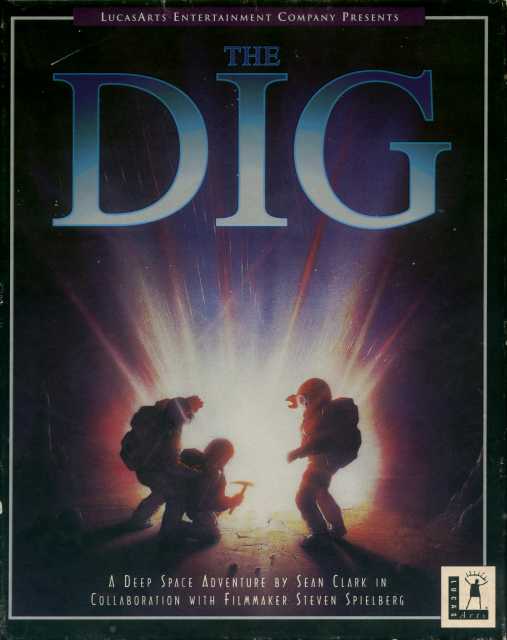The Dig
Can a video game (dare I say any video game?) be a masterpiece based purely off the impeccable refinement of its genre’s gameplay mechanics? I would argue no. There must be something else that really engages the player on both an emotional and intellectual level. These days we see games that have refined their genre’s mechanics, seemingly to the point of perfection. Case in point would be Military FPS and Sports titles. But we don’t call them masterpieces even though we can play them for hours on end.
Can this line of thinking be taken into Point and Click Adventures? Well I will try. I think The Dig is one of those games that borders on greatness and doesn’t quite make it because its vision for telling a story about characters and ideas is too limited.
The concept is compelling for any sci-fi fan, and one you might expect from a talent like Spielberg.
WARNING: Minor Spoilers Ahead (but nothing you haven’t learned from game images on GB)
An asteroid is on a collision course with Earth. Don’t worry though, NASA has done all the math and altering its trajectory will be a relatively simple operation. Your character is Cmdr. Boston Low, the leader of the space shuttle mission that will save the day. Everything is great although you have questions lurking in the back of your head. Why is the reporter chosen for the mission also a world renowned linguistics expert? And why is the mission’s geologist more well known for his work in archaeology? Have the boys back in Houston been hiding something from you?
All suspicions are confirmed when the team discovers that the asteroid is not natural in origin, or has at least been extensively modified. After accidently activating it, the asteroid reveals its true nature, a starship that transports the team to a distant world.
This is where the game really starts, as the team finds itself on an alien world where it seems the local alien civilization has died out. They must explore their surroundings and find a way home. As is typical of its genre, most of your time with The Dig will be spent solving puzzles. How do I make this alien computer display work? How do I get this alien door to open? The puzzles are brilliant from a sci-fi perspective because just as the audience begins to question the realism of how the technology of an extinct alien civilization is comprehensible to other aliens (after all, we still don’t know how the Egyptians built the pyramids), the team realizes that the extinct civilization has designed this entire area to be an automated, interstellar, do-it-yourself Ellis Island. The builders anticipated the possibility that this exact scenario might happen and planned for it. Thank goodness! Most of the puzzles are difficult within reason and entertaining. However, modern gamers who are not accustomed to the genre may get frustrated. Of course these days any player who gets stuck can just go online for answers.
Beyond the excellent sci-fi story, what sets The Dig apart is its outstanding art direction and voice acting. Cocytus (the name of the alien world) is dominated by simplistic, geometric architecture that looks somewhat Star Trekky but sets the mood well. There is excellent, atmospheric music as well. While there are only three characters in the game, their dialogue is realistic and excellent. I should point out that there is a seriousness that pervades almost everything. This is not a comedy or even an adventure in the Hollywood sense of the word. Low’s attitude is cerebral and disciplined, as is the attitude of the team. When you do begin to discover the secrets of Cocytus, there is no battle between good and evil or save-the-world scenario.
So where does it go wrong? Well it doesn’t so much go wrong as fail to go more right. Some of the main themes of the game are issues surrounding chemical addiction, debates over the purpose of technological advancement, and the psychological conflicts that arise from a small group of people becoming isolated in a stressful situation. Unfortunately these themes are only skirted around, and not fully explored. Low spends most of the game by himself, unable to bounce his ideas off someone. With the characters being so fleshed out and relatable, I think most players will wish there was more opportunity for interaction, and more characters period. The essence of the game is puzzle solving, but players will wonder what is really being achieved? Yes I’m trying to find a way home, but what else am I learning along the way? Simply put, it is a somewhat lonely experience, and at the end of the day there is a feeling that I wanted more.
At the beginning of this review I asked whether refinement can create a masterpiece. If one were to consider what makes the perfect Point and Click Adventure, one would probably answer: beautiful scenery, a distinctive atmosphere, outstanding characters and voice acting, an engaging story, and tricky puzzles. The Dig has all this but at the same time it feels incomplete. There are stones that are left unturned, ideas left unthought (a neologism, I know), and feelings left unfelt.
